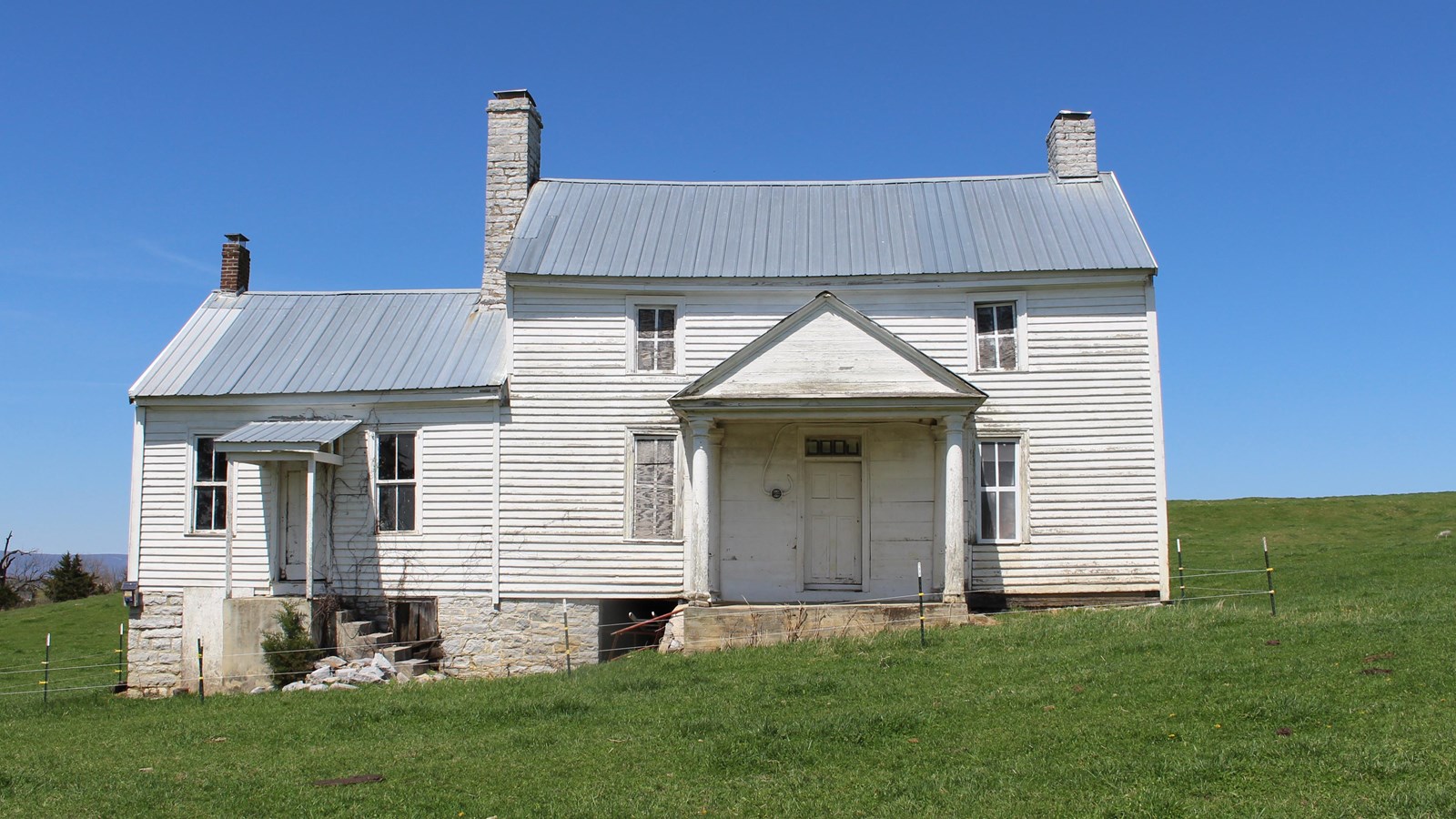Last updated: December 21, 2021
Place
Heater House

NPS
The Heater House stands in the middle of the Cedar Creek Battlefield on the east side of U.S. Route 11, just south of Middletown, in the shadow of the better-known Belle Grove Plantation. The house, originally a 1700's log structure, was added to over time until it became the white clapboard farmhouse that remains today. It was owned during the Civil War by Solomon and Caroline Heater. The war divided the Heaters and their three sons.
The Heater House and its property are not open to the public.
Hoge’s “Big House”
The property on which the Heater House stands was part of a 40,000-acre tract owned by Jost Hite. He parceled off a 760-acre section that he sold to fellow pioneer James Hoge. Hoge then built an outside kitchen, barn, springhouse, cider mill and press, granary, and stables on the property, which was referred to as Cedar Grove Farm. When Hoge died, his will transferred the property to his son, Solomon Hoge. The will mentioned a "big house," most likely the present-day Heater House.
In 1819, Solomon Hoge sold 274 acres of Cedar Grove, including the portion containing the house, to Dr. Cornelius Baldwin, Jr., of Winchester for $15,000. Dr. Baldwin's wife, Nelly C. Hite Baldwin, was the eldest daughter of Isaac Hite, Jr., who built Belle Grove, the large limestone manor house that overshadows the Heater House and sits on part of the original 40,000-acre Joist Hite property. Nelly was born in Belle Grove. The Baldwins owned 11 slaves when the farm was in full operation.
The Baldwins had seven children. By 1830, both parents had died, leaving orphans ranging in age from seven to 20 years old. One of Nelly's many sisters, Rebecca G. Hite, moved from Belle Grove to the Heater House to care for the children. In 1843, the property was sold to Solomon Heater and his wife with a down payment of $2,500. Over the next few years, the Heaters paid off each orphan for his or her share of the farm for a total of roughly $9,735.
Civil War & the Battle of Cedar Creek
During the Civil War, armies from both sides marched through the Shenandoah Valley almost constantly, seeking food, supplies, firewood, and anything else they needed to survive. Caroline and Solomon Heater opened their doors to countless Union troops. One citizen of Middletown recalled, "She entertained not only the officers, but many of the privates and fed them from her own table to the very best of her ability."
On the morning of October 19th, 1864, the Heater family witnessed first-hand the climax of the Civil War in the Shenandoah Valley. Shortly after 7 a.m., the fighting reached the Heater House. Gen. Early used the grounds around the house as a platform to roll out all his artillery to shoot at a remnant of Sheridan's army stationed on a hill above the farm. By the time the smoke cleared, any Union soldiers still alive had fled. That afternoon, after Gen. Sheridan returned to Middletown and rallied his nearly defeated troops, it was Confederate soldiers who fled past the Heater House on their way to Strasburg.
The war left the Heater farm, like most of those in the Valley, in ruins. The government did not pay any restitution before both Solomon and Caroline died (he in 1872 and she in 1892). As the only surviving son, Charles inherited the Heater Farm. In 1901 he was finally reimbursed by the federal government in the amount of $5,480, less than half of what the family requested to cover its losses.
Preservation
The Heater House and its surrounding property are owned today by the Cedar Creek Battlefield Foundation. It hopes that one day the house will be restored so it can be used for historical interpretation. In the meantime, it is a monument to all the small farm families that witnessed so much suffering and destruction in the Shenandoah Valley.
